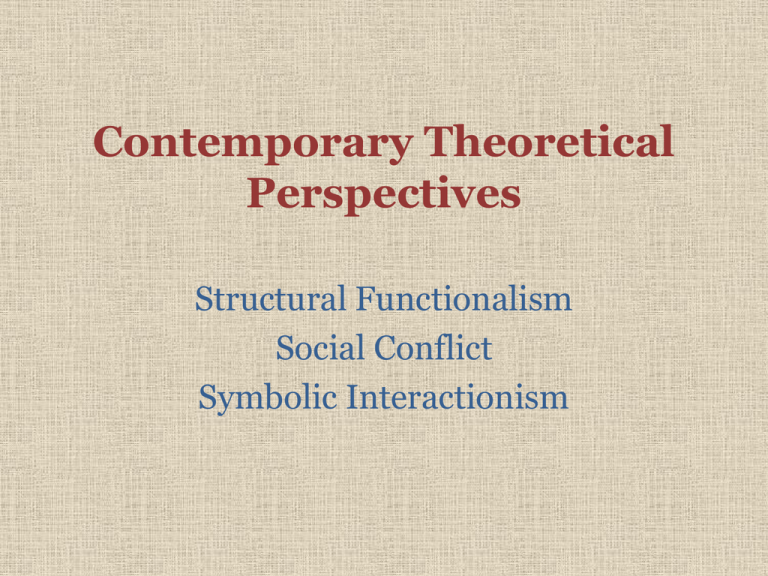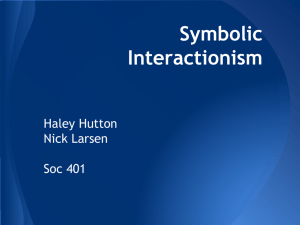Contemporary Theoretical Perspectives
advertisement

Contemporary Theoretical Perspectives Structural Functionalism Social Conflict Symbolic Interactionism Theory • A statement of how and why specific facts are related • Theoretical Approach: a basic image of society that guides thinking and research Think of theories as lenses that we look through to view sociology in different ways. Structural Functionalist Perspective • Views society as a complex system whose parts work together to create stability • Focus on institutions that shape society as a whole • The family, education, government, religion & economy • Consequences affect all institutions, not just one • Example: Difficult home life affects an adolescent’s performance in school Structural Functional Lens • Herbert Spencer compared society to the “body” and the parts of society (norms, customs, traditions, institutions) to “organs” • All parts or “organs” are important and have a specific function • Other Theorists: Auguste Comte, Talcott Parsons, and Robert Merton Structural Functional Lens • How does society become dysfunctional? – Parts of society that create dysfunction include poverty, crime and prostitution Social Conflict Lens • Think about Social Conflict Theory in relation to shopping… • Everyone in society is competing for power and resources • Conspicuous Consumption “Shopping entails the joy of going into a safe spot filled with things to look at where shoppers are treated deferentially. Although no one has hooked up a lie detector to a shopper, if they did, the machine would register increased arousal, heightened involvement, perceived freedom and fantasy fulfillment.” (Twitchell, sociological scholar) “Get in loser, we’re going shopping.” -Mean Girls Social Conflict Lens • Views society as an arena of inequality that creates conflict and change • Groups compete for control of scarce resources – “Owners” vs. “Workers” – Continuous conflict between the two ends in revolution • Inspired by Karl Marx • Functional Theory looks for stability, whereas Conflict Theory looks for tension Symbolic Interactionism Lens • The way we learn to interpret and give meaning to the world through our interactions with others • Interactions are interpreted through existing symbols – Verbal & non-verbal communication – Understanding symbols is important to understanding human behavior • Theorists: George Herbert Mead, Erving Goffman and Herbert Blumer Symbolic Interactionism Lens • Dramaturgical Approach (Erving Goffman) – Compares everyday life to actors on a stage – We wear a variety of masks & act differently depending on the situation we are placed in • Focus on people’s face to face interactions and the roles people play






